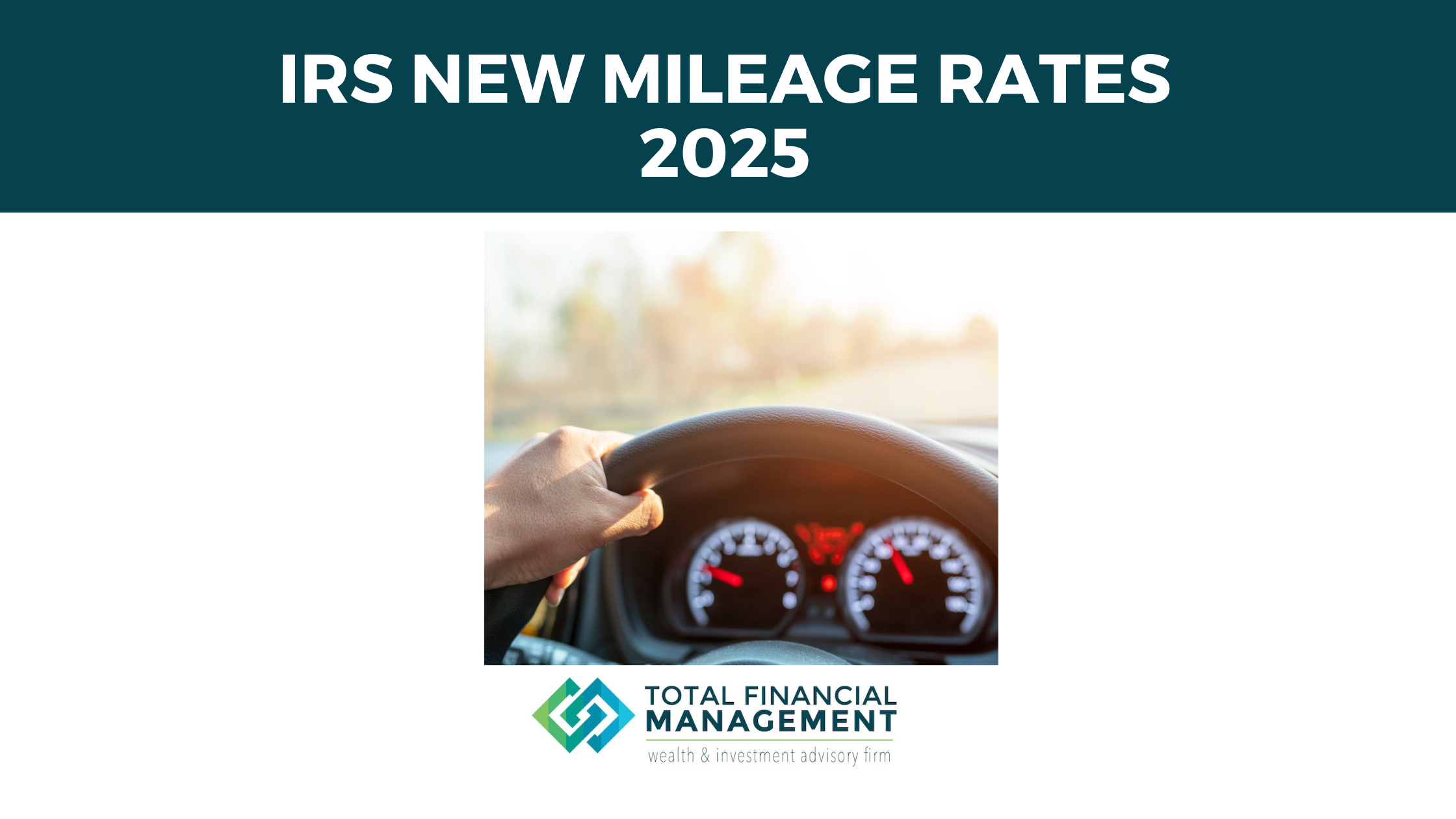
2025 IRS Standard Mileage Rate Update: What It Means for Your Financial Strategy
The IRS has announced changes to the optional standard mileage rates for 2025, impacting how businesses and individuals calculate deductible vehicle expenses. Starting January 1, 2025, the rate for business mileage will rise, while other rates remain unchanged. Here’s what Total Financial Management clients need to know about these updates and how to incorporate them into your financial planning.
Key 2025 Mileage Rates
For cars, vans, pickups, and panel trucks, the IRS has set the following rates:
- Business Use: 70 cents per mile — up 3 cents from 2024.
- Medical and Moving Use: 21 cents per mile — unchanged from 2024.
- Charitable Use: 14 cents per mile — unchanged, as determined by statute.
These rates apply to all types of vehicles, including electric, hybrid, gasoline, and diesel-powered models.
Implications for Business Owners
For businesses reimbursing employees or deducting mileage for company operations, the updated rate for business use reflects higher costs of vehicle operation. Ensure your accounting systems are updated to incorporate this change and maintain accurate expense records.
Tax Rules to Keep in Mind
Under the Tax Cuts and Jobs Act (TCJA):
- Unreimbursed Employee Expenses: These are no longer deductible for employees, meaning accurate employer reimbursement is critical.
- Moving Expenses: Only active-duty military members relocating under orders to a permanent change of station can claim this deduction.
Choosing Between Standard Mileage Rates and Actual Costs
Taxpayers can either:
- Use the standard mileage rate, offering a straightforward method to calculate deductions.
- Deduct actual vehicle operating expenses, which may yield higher deductions for those with extensive vehicle-related costs.
For owned vehicles, the standard mileage rate must be used in the first year the vehicle is put to business use. You can then switch methods in subsequent years. For leased vehicles, the chosen method must be used consistently for the entire lease period.
How This Affects Financial Planning
For businesses:
- Review and update reimbursement policies to align with the new rates.
- Incorporate the changes into budgeting processes, particularly for roles that require significant travel.
For individuals:
- If you drive extensively for medical, charitable, or military moving purposes, these unchanged rates should still be considered in your financial planning.
- Discuss with your tax advisor whether the standard mileage rate or actual expense method is most beneficial for your situation.
Guidance for 2025 Tax Year
IRS Notice 2025-5 outlines detailed mileage rates and allowances, including:
- Limits for automobile costs under fixed-and-variable rate (FAVR) plans.
- Valuation rules for employer-provided vehicles used for personal purposes.
Clients of Total Financial Management can rely on our team to help interpret these updates and integrate them into tax strategies and financial plans.
Plan Ahead
With the new mileage rates in effect, now is the time to revisit your approach to vehicle-related expenses. Whether you’re a business owner or an individual taxpayer, Total Financial Management is here to help ensure you’re making the most of these updates.
Contact us today to discuss how these changes might impact your financial goals.


Leave A Comment